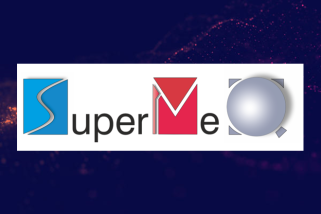
Clock & Network synchronisation
A new generation of quantum enhanced optical clock is now emerging showing significantly improved accuracy with respect to the present atomic clocks.
A new generation of quantum enhanced optical clock is now emerging showing significantly improved accuracy with respect to the present atomic clocks.
These clocks will further push the possibility to use clocks for sensing of gravitational waves, dark matter detection, earthquake detection, relativistic geodesy, foundations of physics tests, but the clock accuracy should be available outside metrological labs. This is possible only if the clock frequency is distributed by means of the novel optical fiber link technology that is developed by all major national metrological institutions (NMIs).
Atomic clocks can “easily” provide the same ticking frequency as long as their accuracy is well defined (or when their frequency is very stable and they are calibrated with respect to a primary clock. Physic guarantee that two different clocks based on the same atom tick at the same frequency, leaving the absolute phase as a free parameter.
Indeed is quite challenging to keep them synchronized in term of absolute phase, so that they tic at the same moment.
The first thing to be defined is a common reference frame according to general relativity. This reference is arbitrary chosen to be the mean sea level on the earth surface.
Clock must be phase coherent if we are willing to date a give event and to keep time in a univocal way.
A paradigmatic example is given by satellite navigation systems (GNSS), in these systems a large constellation of satellites carrying atomic clocks on board must provide accurate time to the users in order to allow Geo-localization. In this case it is of fundamental importance that all clocks of the constellation are in phase within few ns. Error of 1 ns corresponds to 30 cm error in determining the user position on the ground.
Most common clock synchronization method is based on the use of satellite. This technique allows an accuracy ranging from 100 ns to 500 ps depending on the details of the system.
Emerging technique is optical fiber synchronization, where a point to point connection is established: Optical fiber synchronization allows to increase the synchronization accuracy to few tens of ps.
A new generation of quantum enhanced optical clock is now emerging, where the short term stability of the clock can be significantly improved exploiting cooperative behaviours of the atoms and other “quantum” techniques capable to push the clock noise below the shot noise level approaching the Heisenberg limit.
These clocks will further push the possibility to use clocks for sensing of gravitational waves, dark matter detection, earthquake detection, relativistic geodesy, satellite navigation and in general will enable their use to test new physical theories.
Many applications will require to make clock accuracy available outside metrological labs, and to be able to accurately compare remote clocks. This is possible only if the clock frequency is distributed by means of dedicated optical fiber links. A technology that is being tested and developed by all major NMIs, and has already been proved to improve satellite distribution and comparison techniques by orders of magnitude.
The technological development of fiber link is fairly well established, and is required to bolster the European infrastructure, making a large network of dedicated fiber available to connect all the scientific and industrial users. Optical clocks are currently operated in NMIs laboratories for extended period of times and the expected time to see a fully industrialized device is of the order of few years (probably less than 10).
Regarding instead the development of quantum enhances optical clocks, research projects are being developed in all major NMIs and in several research institutions and universities. These clocks have not yet been realized and operated, we can expect to have laboratory prototypes operational within 5-6 years.



